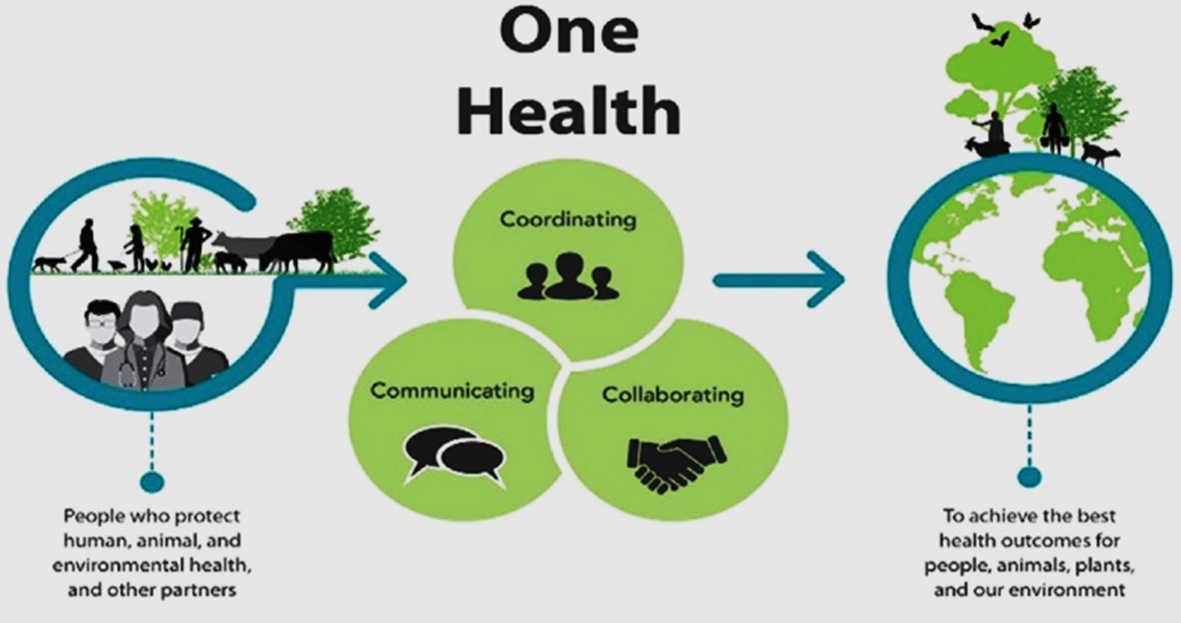Tuesday, 25th May 2021
This Day in History -DNA sequencing
On May 25, 1995, DNA sequencing of a self-replicating, free-living organism was performed for the first-time by J. Craig Venter and colleagues in the USA. The organism which was sequenced was H.flu (Haemophilus Influenzae), a bacterium that can cause meningitis and ear and respiratory infections in children. DNA sequencing is the process of determining the nucleic acid sequence, which is the order of nucleotides in DNA. This remarkable feat was achieved using shotgun sequencing, a technique of breaking the genome into a collection of small DNA fragments that are sequenced individually. It paved the way for sequencing of DNA of complex organisms like humans.

Sources: https://www.dna-worldwide.com/resource/160/history-dna-timeline
Networking of existing telescopes
In News
The BRICS Astronomy Working Group has recommended networking of telescopes in member countries and creating a regional data network.
About the News
- India hostedthe seventh meeting of BRICS Astronomy Working Group (BAWG) where the delegates recommended the networking of existing telescopes in BRICS countries and creating regional data network.
- The meeting stressed on increasing collaborationsbetween the member countries, and sharing, networking and optimising the use of all currently operational telescopes located across BRICS nations.
- The BAWG envisages a Human Capacity Building programme, wherein professionals will be skilled to be employed once the network of telescopes and data centre are up and running in future.
- The huge amounts of data generated after the networking of telescopes will need to be transported, processed and archived which can be achieved through a Data Network.
- Though the final funding modalitiesfor the project is still under consideration and being worked out by the Department of Science and Technology (DST) in India, it has been agreed that every country will contribute one million Euros, annually.
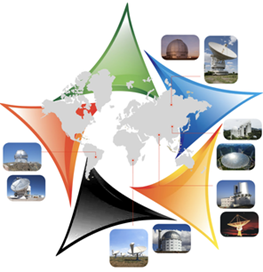
India’s role in this programme
- India could play a lead rolein setting up a data centre network which will process and archive large volumes of astronomical data generated by the future network of observatories that will be built and operated by BRICS nations.
- With India being part of building mega projects like the Square Kilometre Array (SKA),the scientific community is aware of the need for possessing large data centres in the coming future.
- The Square Kilometre Array (SKA) project is an international effort to build the world’s largest radio telescope, with eventually over a square kilometre (one million square metres) of collecting area.
- Some of the Indian Institutions and observatories that can play a role in the BRICS astronomy landscape are:
- Indian Astronomical Observatory, Hanle:The Indian Astronomical Observatory sits at a height of 15,000 ft at Hanle in Ladakh and is the second highest observatory in the world. It houses the 2 m class Chandra telescope and a High-Altitude gamma ray observatory .
- Udaipur Solar Observatory:The Udaipur Solar Observatory is one of the best solar observing sites in Asia. The observatory comprises telescopes like the Solar Optical Telescope, which is a 50 cm aperture Multi-Application Solar Telescope (MAST), Global Oscillation Network Group (GONG) telescope that provide excellent quality of solar observations.
- Aryabhatta Research Institute of observational sciencES (ARIES):Indian Astronomy marked its major achievement in 2016 after it unveiled Asia’s one-of-a-kind and the largest optical telescope at Devasthal, near Nainital. The 3.6 Devasthal telescope built by the Aryabhatta Research Institute of Observational Sciences (ARIES).
- Kodaikanal Solar Observatory, Kodaikanal:Run by Indian Institute of Astrophysics in Tamil Nadu, this observatory has in store more than 100 years of data on the Sun and its influence on Earth and surrounding space.
- Vainu Bappu Observatory, Kavalur:Operated and owned by the Indian Institute of Astrophysics (IIA), the Vainu Bappu Telescope, which boasted of being the Asia’s largest telescope until another telescope of 3.6 m was set up in 2016 in Nainital’s ARIES observatory.
https://www.bricsastronomy.org/brics-intelligent-telescope-and-data-network/
Global Health Summit
In News
The Global Health Summit, organized by the Italian G20 Presidency in partnership with the European Commission, was held in Rome.
Key Takeaways from the Summit
- Leaders of G20 and other states, shared experience of the ongoing global COVID-19 pandemic and recognised the role of extensive COVID-19 immunization as a global public good.
- It also welcomed the World Health Organization’s (WHO) designation of 2021 as the Year of Health and Care Workers.
- The Summit ended with signing of the Rome Declaration.
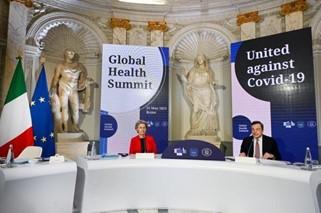
Key Principles of Rome Declaration
- Support and enhance the existing multilateral health architecture for preparedness, prevention, detection, and response with an appropriately, sustainably and predictably funded, effective WHO at its center.
- Work towards and better support the full implementation of the International Health Regulations 2005, and multi-sectoral, evidence based One Health approach.
- Foster all-of-society and health-in-all policies approaches and promote responsibility at the highest levels of government.
- Promote the multilateral trading system, noting the central role of the WTO, and the importance of open, resilient, diversified, secure, efficient, and reliable global supply chains across the whole value chain related to health emergencies, including the raw materials to produce vaccines.
- Enable equitable, affordable, timely, global access to high-quality, safe, and effective prevention, detection and response tools as well as to non-pharmaceutical measures.
- Support and facilitate-
- low- and middle-income countries to build expertise and develop local and regional manufacturing capacities.
- data sharing, capacity building.
- Finance: Leverage blended finance, innovative mechanisms, public, private, and philanthropic sources, and international financial institution funds like allocation of Special Drawing Rights by the IMF to address the need for enhanced, streamlined, sustainable and predictable mechanisms.
https://reliefweb.int/sites/reliefweb.int/files/resources/Global_Health_Summit_Rome_Declaration.pdf
The Protected Planet Report 2020
In News
The Protected Planet Report 2020 has been recently released by the United Nations Environment Programme (UNEP) and the International Union for the Conservation of Nature (IUCN).
About the report
- Protected Planet Reports are biennial landmark publications that assess the state of protected and conserved areas around the world. The 2020 edition provides the final report on the status of Aichi Biodiversity Target 11 and looks to the future as the world prepares to adopt a new post-2020 global biodiversity framework.
- The Aichi Target 11 is the global 10-year target on protected and conserved areas which aimed to bring important benefits to both biodiversity and people by 2020. Aichi Target 11 included the aim of protecting at least 17% of land and inland waters and 10% of the marine
State of Working India 2021: One year of Covid-19
In News
A new report released by the Azim Premji University documents the impact of one year of Covid-19 in India, on jobs, incomes, inequality, and poverty. The report also examines the effectiveness of policy measures that have thus far been undertaken to offer relief and support.
Major Findings
- Increased informality: The pandemic has increased informality and led to a severe decline in earnings for the majority of workers resulting in a sudden increase in poverty. After the lockdown, workers came back into more precarious and informal forms of employment. The nature of the fallback option also varied by caste and religion.
- Segments of population affected: Women and younger workers have been disproportionately affected due to the pandemic. Households have coped by reducing food intake, borrowing, and selling assets.
- Inadequacy of support measures for vulnerable groups: Government relief has helped avoid the most severe forms of distress, but the reach of support measures is incomplete, leaving out some of the most vulnerable workers and households.

Effectiveness of government relief measures during the pandemic
- Combination of government support announced during the pandemic: Free rations, cash transfers, MGNREGA, PM-KISAN payments, and pension payments were some of the major support measures announced to combat the effects of the pandemic on vulnerable households. States also experimented with many policies to offer more support.
- Impact of initiatives: With respect to schemes like PMGKY, while 65% of the card holders received some PMGKY allocation, 35% received only their usual quota suggesting no increased allocation. Similarly, the additional transfers promised under the Jan Dhan accounts were received by only 60% of the women-owned Jan Dhan accounts.
- Role of MGNREGA: MGNREGA played a vital role in ensuring a safety net in rural areas. There has been an increase of over 43 per cent in the number of person-days with respect to MGNREGA. Since April, only 55 per cent of those rural respondents who demanded work had been able to get it.
Measures required to emerge from the crisis
- Need for fiscal stimulus: India’s fiscal response to Covid has been conservative. The second wave of Covid has led to a larger impact in terms of work, income, food security, health and education. The states, who are at the forefront of the pandemic response in terms of containment as well as welfare, are severely strained in their finances. Thus, there are compelling reasons for the Union government to undertake additional spending now.
- Urgent Policy measures needed: Some of the urgent policy measures that are needed include cash transfer to all households holding Jan Dhan accounts, expansion of MGNREGA, launching a pilot urban employment programme etc.
- Address the socio-economic impacts of the pandemic: In addition to providing income support, the government also needs to address the nutritional and educational deficits, occurring due to stressed household finances. Women leaving the labour market can lead to long term increases in already large gender gaps. Youth may also experience long-term impacts on earnings and productivity due to these lost years.
- National Employment Policy: The report also proposed a framework for a National Employment Policy, which includes the promotion of public investment in social infrastructure as well as facilitation of private investment. There is also the need to create a social security infrastructure with the help of rights-based entitlements and portable benefits.
Conclusion
The nature of the shock delivered by the pandemic is complex and is likely to unfold in the years to come. The one year since the national lockdown has been marked with continued disruptions in supply resulting from firm bankruptcies, mobility restrictions, and reverse migration of workers. The immediate measures needed to deal with the crisis include bringing about improvement in the household consumption and reviving growth. Good quality public spending will revive demand, create employment, and generate the tax revenue necessary to keep the debt-GDP under control.
Mains Question:
The medium and long-term impact of Covid-19 will be particularly severe for the informal sector of the country and compound the existing socio-political divide. Suggest measures needed to support sections of the country employed in the informal sector.
Source: https://azimpremjiuniversity.edu.in/SitePages/pdf/SWI2021_OneYearofCovid19.pdf
Image of the Day 22-degree halo
This is the image of a phenomenon scientifically known as the ’22-degree halo’. This optical illusion in the form of a rainbow-coloured halo around the sun was observed in Bengaluru. This phenomenon occurs when there is a thin layer of high cirrus clouds in the sky. These clouds contain millions of tiny hexagonal ice crystals. Reflection and refraction occur when light falls on these crystals. At a certain location on earth the light is refracted, as it enters and leaves a crystal, by 22 degrees. This angle of refraction is the reason behind the halo like appearance around the sun. Such halos may also form around the moon on a cold night.

Havana Syndrome
- Context: Recently, two US officials have shown symptoms of a mystery illnessthat is linked to Havana Syndrome.
- In late 2016,few diplomats and employees from the US had reported certain unusual symptoms during their stay in Havana, Cuba, experiencing some odd physical sensations and peculiar sounds, after which they started feeling sick.
- The symptoms of this Havana syndrome include nausea, severe headaches, fatigue, dizziness, sleep problems and hearing loss, with some requiring months of medical treatment.
- In 2020, a report by the National Academies of Sciences (NAS), USfound directed microwave radiation to be the plausible cause of the Havana syndrome.
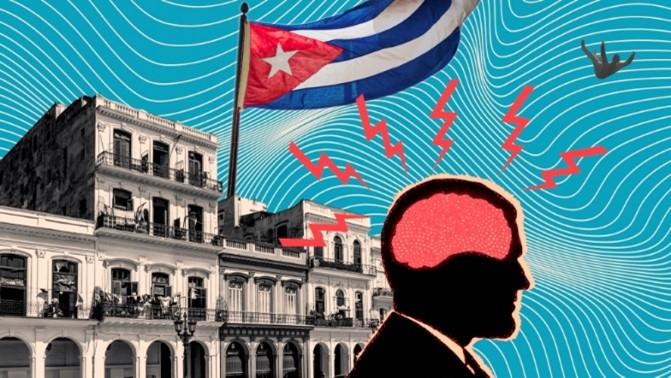
Primary source: https://www.newindianexpress.com/world/2021/may/23/growing-mystery-of-suspected-energy-attacks-draws-us-concern-2306527.html
https://www.health.com/condition/rare-disorders/what-is-havana-syndrome
Mount Nyiragongo
- Context: Thousands have fled due to a volcanic eruption from Mount Nyiragongo, near Goma City, Democratic Republic of Congo.
- Mount Nyiragongo is an active strato volcano with an elevation of 3,470 m in the Virunga Mountains associated with the Albertine Rift. It is one of the 16 Decade Volcanoes.
- Nyiragongo’s lava lake has at times been the most voluminous known lava lake in recent history.
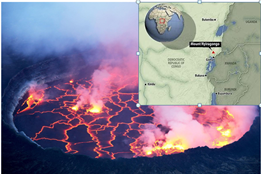
Primary source: https://www.thehindu.com/news/international/volcano-erupts-near-congolese-city-of-goma-residents-flee/article34624861.ece
China’s 17+1 cooperation forum
- Context: Lithuaniaquit China’s 17+1 cooperation forum with central and Eastern Europe by calling it “divisive”.
- The 17+1 (China and Central and Eastern Europe Countries) initiativeis a China-led format founded in 2012 in It aims to expand cooperation between Beijing and the CEE (Central and Eastern Europe) member countries, with investments and trade for the development of the CEE region.
- The initiative includes twelve EUmember states and five Balkan states and focuses on infrastructure projects such as bridges, motorways, railway lines and modernization of ports in the member states. The platform is largely seen as an extension of China’s flagship Belt and Road initiative (BRI).
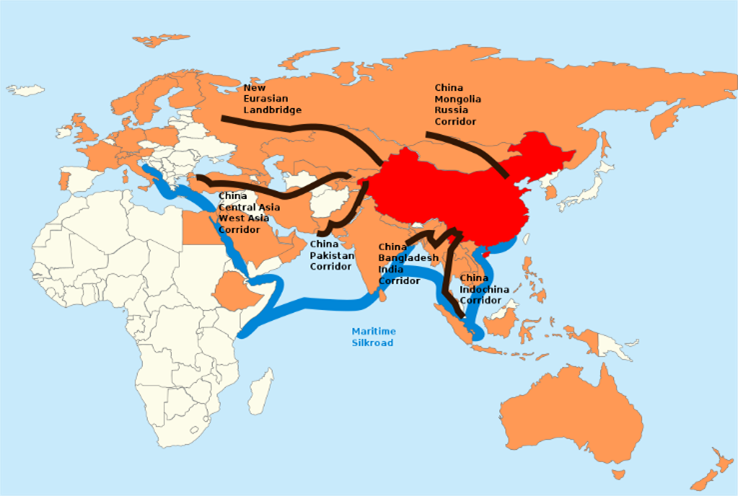
Primary source: https://www.thehindu.com/news/international/lithuania-quits-divisive-china-group/article34629296.ece
https://en.wikipedia.org/wiki/Belt_and_Road_Initiative#/media/File:One-belt-one-road.svg
One Stop Centre (OSCs)
- Context: OSCs has provided assistance to over 3 lakh women so far.
- OSCs are intended to provide integrated support and assistance to women affected by violence and in distress, within the family, community and at the workplace. It aims to facilitate immediate, emergency, and non-emergency access to a range of services including police, medical, legal aid and counselling, psychological support to fight against any forms of violence against women.
- Running since April 2015, One Stop Centre Scheme was formulated by Ministry of Women and Child Development (MWCD).
.png)
Primary source: https://pib.gov.in/PressReleasePage.aspx?PRID=1720843
https://www.lexquest.in/one-stop-centres-a-well-intentioned-scheme-gone-awry/
Global trade after COVID-19: From fixed capital to human capital
Essence: Some commentators have trumpeted the “end” of globalization in the wake of rising protectionism over the last half decade, the sudden economic stops wrought by COVID-19, and the corollary disruptions of supply chain activity around the world. But the recent developments in the global trade environment including green frameworks, digital protocols and regional partnerships offer a glimpse not of the demise of globalization, but rather, of what global trade may look like in the post-COVID-19 era.
Why you should read this article?
- Briefly know about the Globalisation, its pros and cons.
- Understand how various countries have acted out against trade and supported economic nativism regardless of the underlying causes of domestic inequality and social anxiety.
- Learn about the emerging paths or way forward for post-COVID-19 trade in the digital, green, and regional spaces, against a turbulent geopolitical context.
- Identify the opportunities created due to global division of labour and capital and understand how they can be leveraged in post Covid times.
Article Link: https://www.orfonline.org/research/global-trade-after-covid-19-from-fixed-capital-to-human-capital/
Expanding the scope of POCSO
Essence- India needs to revise its legal and procedural methods in line with the UN Convention on the Rights of the Child to deal with ‘Historical Child Sexual Abuse’ under protection of Children from Sexual Offences Act (POCSO). One of the major drawbacks of delayed reporting (historical child sexual abuse) is lack of evidence because of accommodation syndrome, threats from the perpetrator, fear of public humiliation, among children. Though there were several provisions and sections prior to the enactment of POCSO in 2012, but they classified as inefficient and frivolous in dealing with such cases for example- more than three years after the date of incident is barred by the CrPC. Thus, such scenario renders historical reporting of child sexual offences which took place before 2012 legally implausible. Non applicability of time limit for POCSO cases was a good step by the government but it still fails to address the plight of children who were victims of sexual abuse before 2012. So, there is an urgent need to reform and revise our laws to account for various developments. Also, government must frame guidelines to direct effective and purposeful prosecution in cases which are not covered by the POCSO and must balance the rights of the victims and the accused.
Why you should read this article?
- To get an overview of sexual offence acts in India and their drawbacks, keeping focus the issue of historical child sexual abuse.
- To know the meaning of historical child sexual abuse and what are the issues when they reported.
- To understand how POCSO still fails to address the historical child sexual abuse cases.
- To know what could be the possible solutions in dealing such cases.
Article Link: https://www.thehindu.com/todays-paper/tp-opinion/expanding-the-scope-of-pocso/article34637543.ece
Meet the Manipur IAS officer who built a 100 km road through crowdfunding
Background:
- In the remote areas of Manipur, many villages were inaccessible because there were no roads. With no road connectivity, local population had to either walk for hours or swim across the river.
- With people’s support, Armstrong Pame build 100-km road called People’s Road.
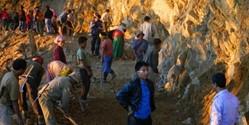
People’s Road:
- It refers to 100-km road constructed in 2012, which connects Manipur with the states of Assam and Nagaland.
- Entire credit for its construction belongs to Armstrong (Miracle Manof Manipur) along with people, as it was constructed without any aid from the government.
Other Initiatives by Miracle Man of Manipur:
- He invites 10 students from fifth to tenth standard for dinner every week to give them a glimpse in the life of an IAS officer.
- The students are selected from several schools in the district.
Recognition of the efforts:
- In 2012, Armstrong was nominated for the CNN-IBN Indian of the Year Award in the Public Service Category.
- He was conferred with India's Most Eminent IAS Officer Award in 2015.
Values upheld:
- Leadership, commitment, dedication to serve public, passion, high emotional intelligence, empathy, compassion
Quote:
The best way to find yourself is to lose yourself in the service of others: M. Gandhi
Things to Ponder:
How should you write a quote based answer.
Reference: https://nenow.in/north-east-news/nes-miracle-man-makes-100-influential-young-people-government.html
Share the article
Get Latest Updates on Offers, Event dates, and free Mentorship sessions.

Get in touch with our Expert Academic Counsellors 👋
FAQs
UPSC Daily Current Affairs focuses on learning current events on a daily basis. An aspirant needs to study regular and updated information about current events, news, and relevant topics that are important for UPSC aspirants. It covers national and international affairs, government policies, socio-economic issues, science and technology advancements, and more.
UPSC Daily Current Affairs provides aspirants with a concise and comprehensive overview of the latest happenings and developments across various fields. It helps aspirants stay updated with current affairs and provides them with valuable insights and analysis, which are essential for answering questions in the UPSC examinations. It enhances their knowledge, analytical skills, and ability to connect current affairs with the UPSC syllabus.
UPSC Daily Current Affairs covers a wide range of topics, including politics, economics, science and technology, environment, social issues, governance, international relations, and more. It offers news summaries, in-depth analyses, editorials, opinion pieces, and relevant study materials. It also provides practice questions and quizzes to help aspirants test their understanding of current affairs.
Edukemy's UPSC Daily Current Affairs can be accessed through:
- UPSC Daily Current Affairs can be accessed through Current Affairs tab at the top of the Main Page of Edukemy.
- Edukemy Mobile app: The Daily Current Affairs can also be access through Edukemy Mobile App.
- Social media: Follow Edukemy’s official social media accounts or pages that provide UPSC Daily Current Affairs updates, including Facebook, Twitter, or Telegram channels.

